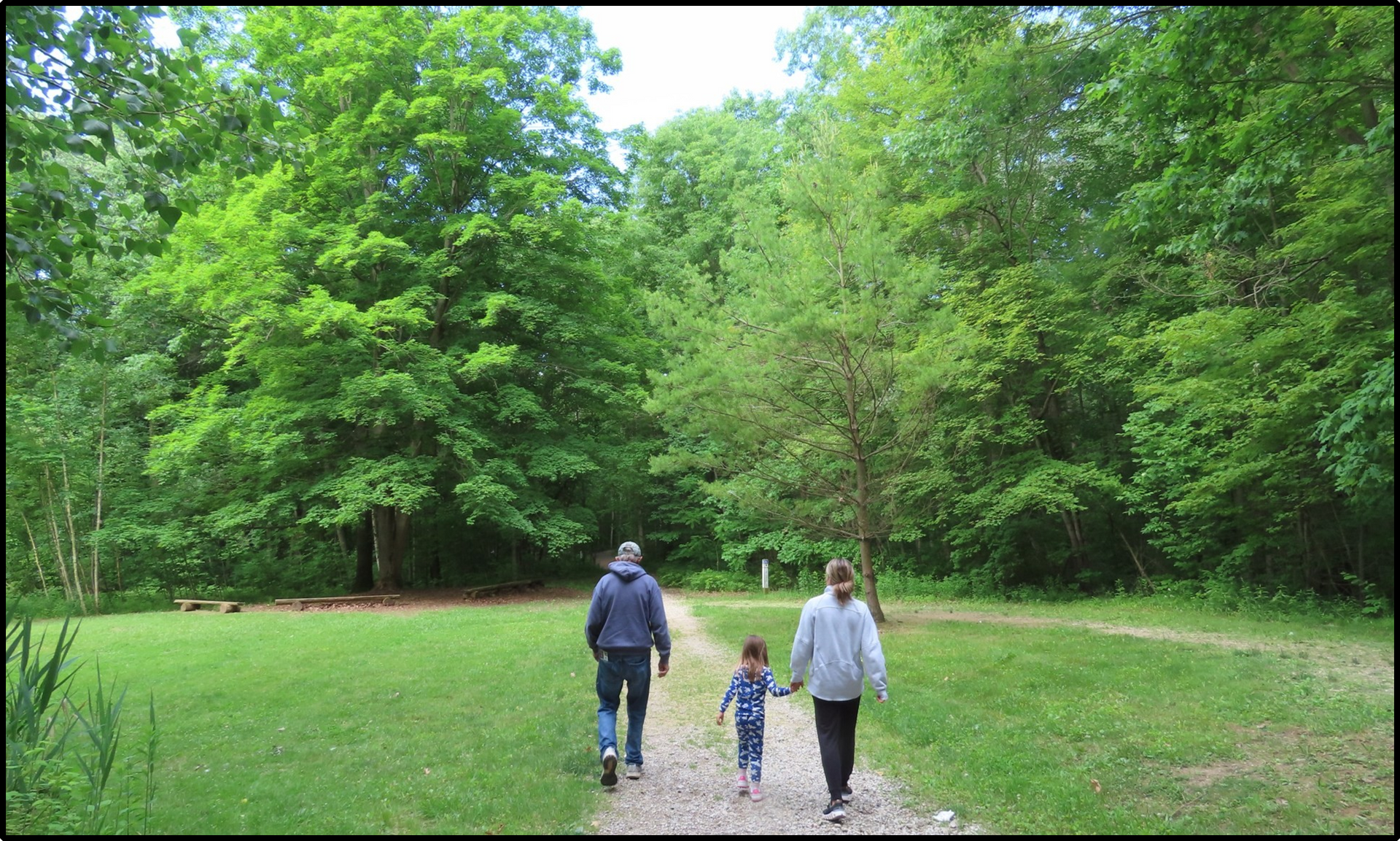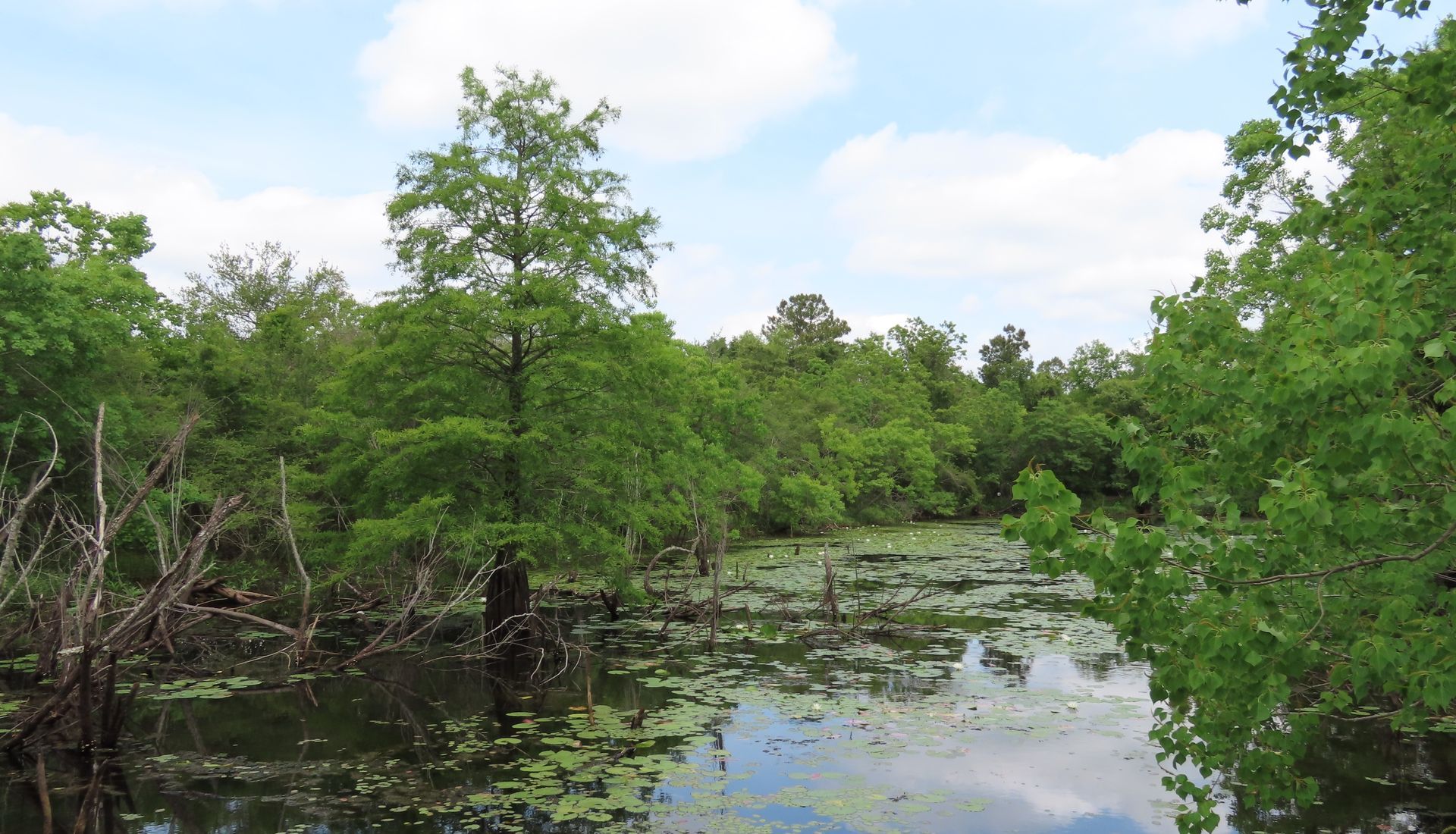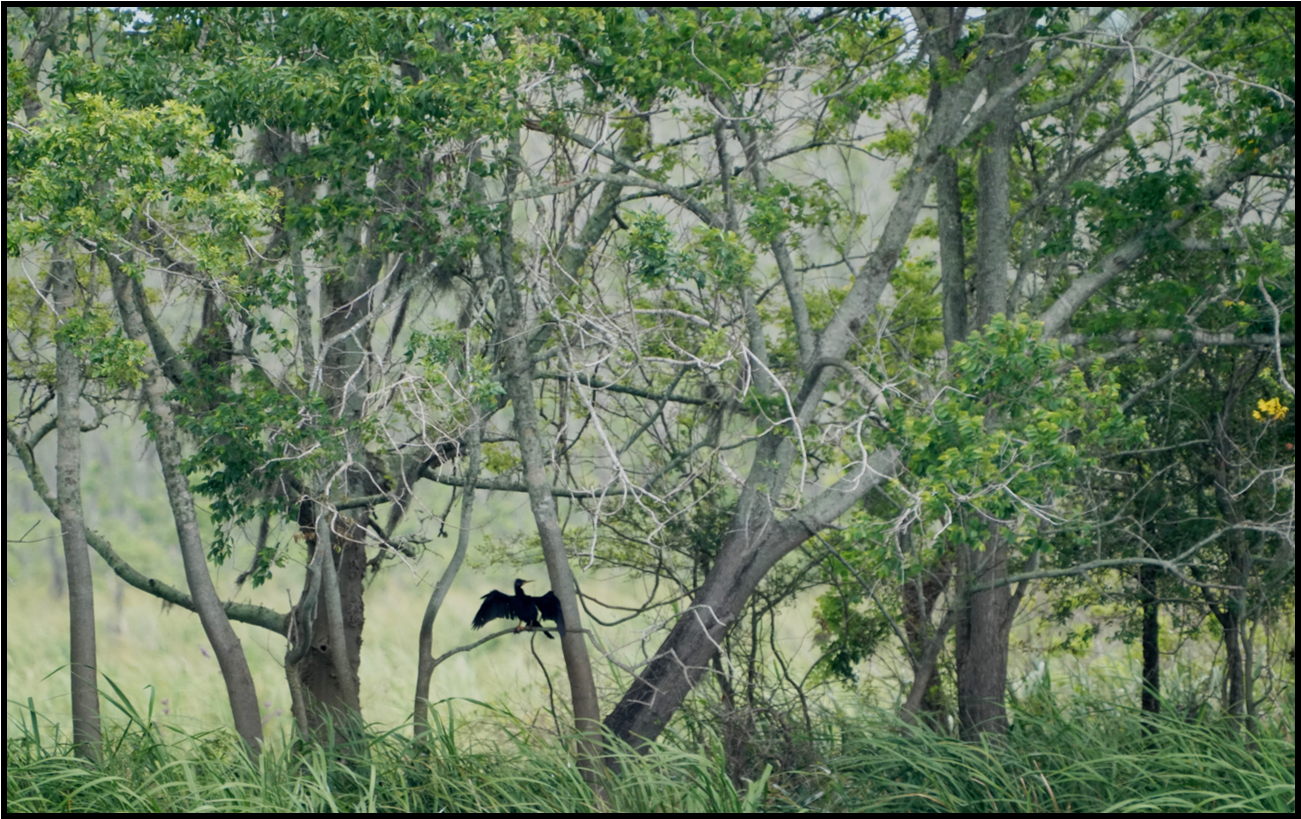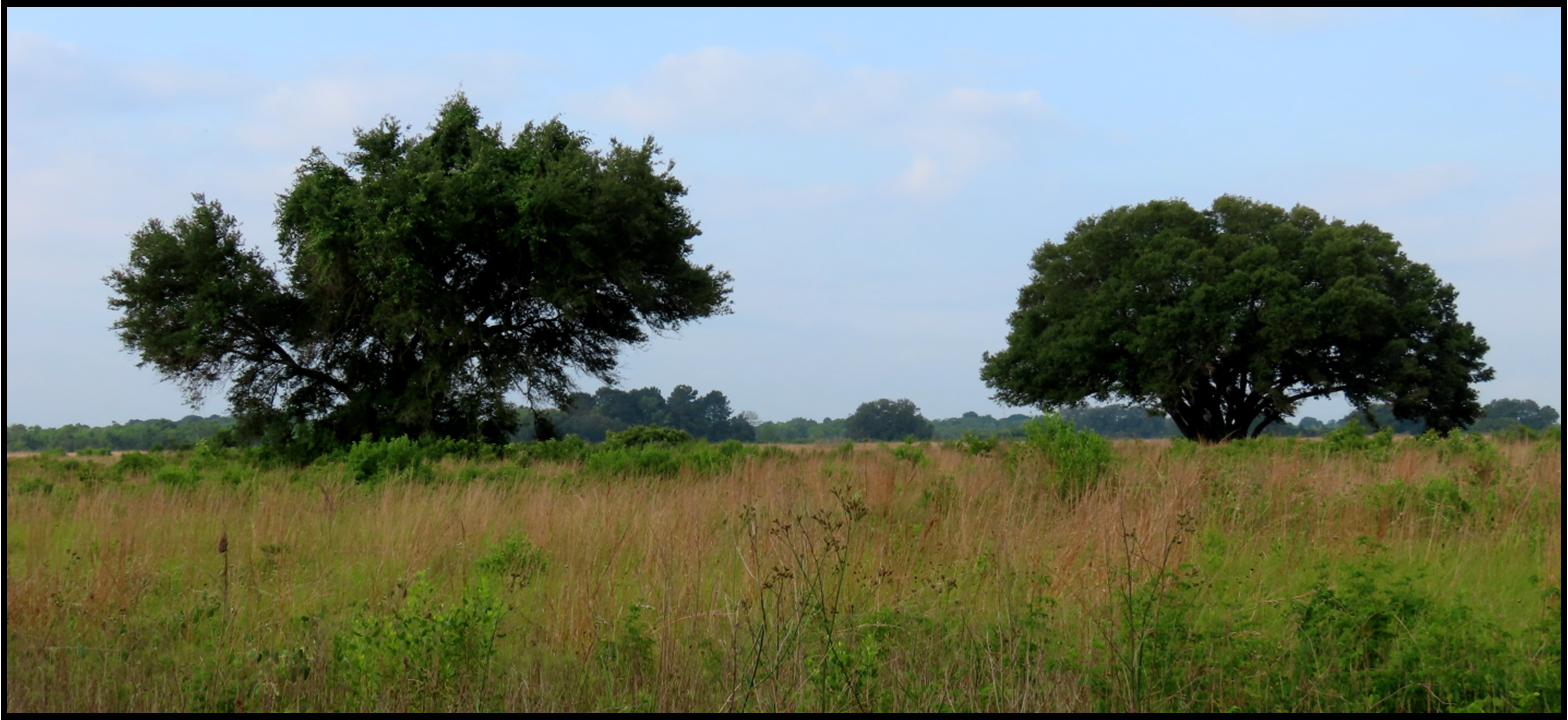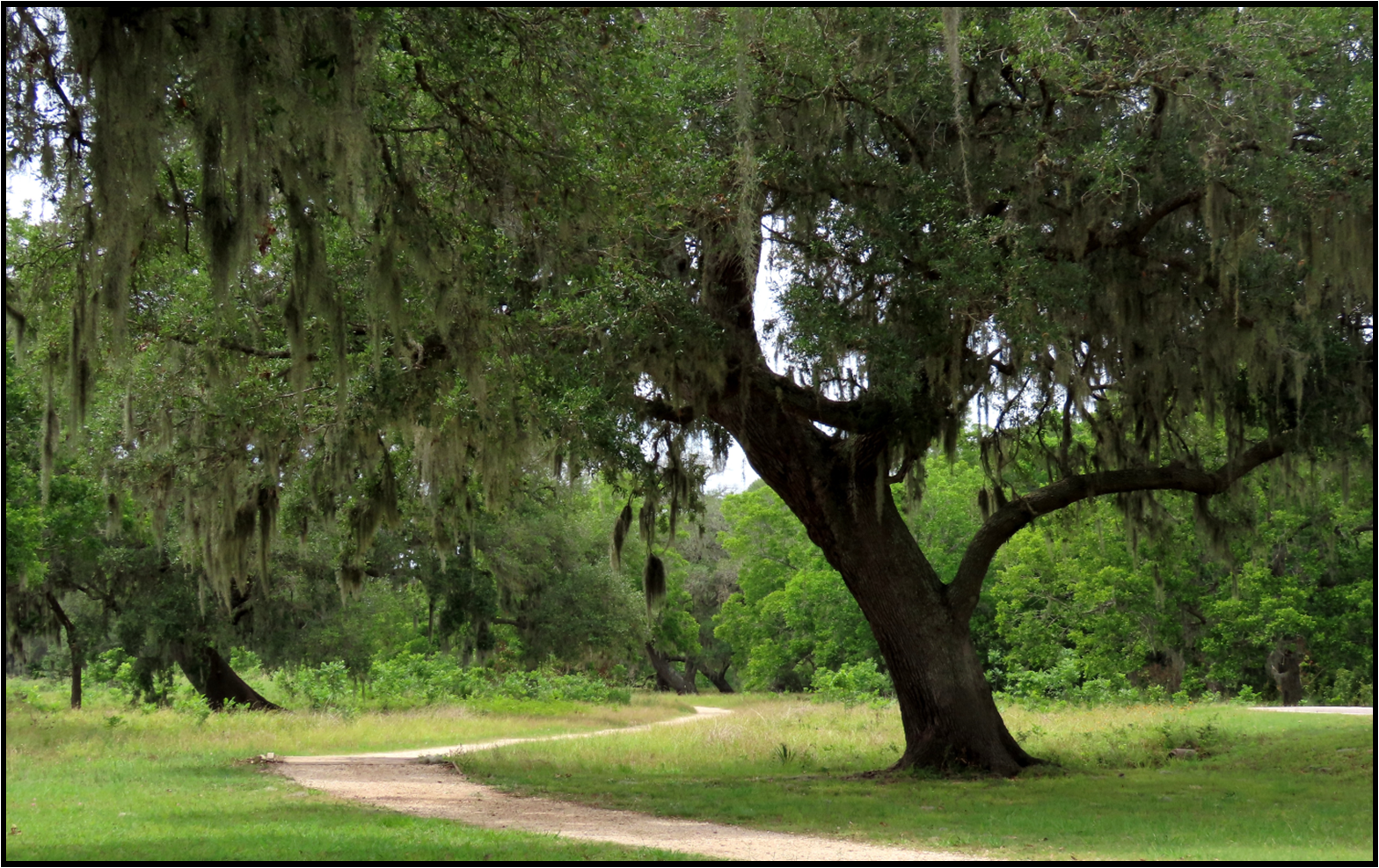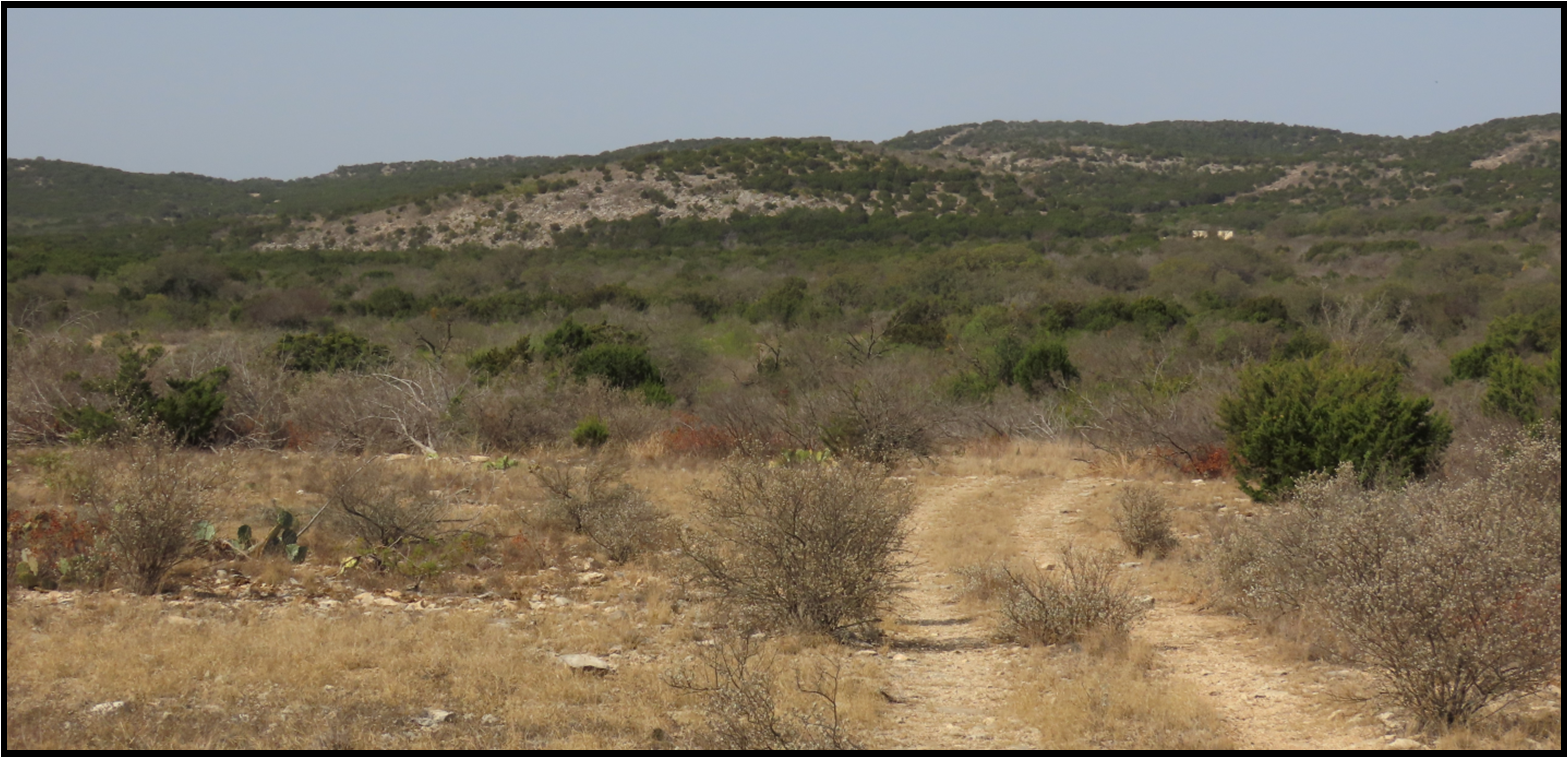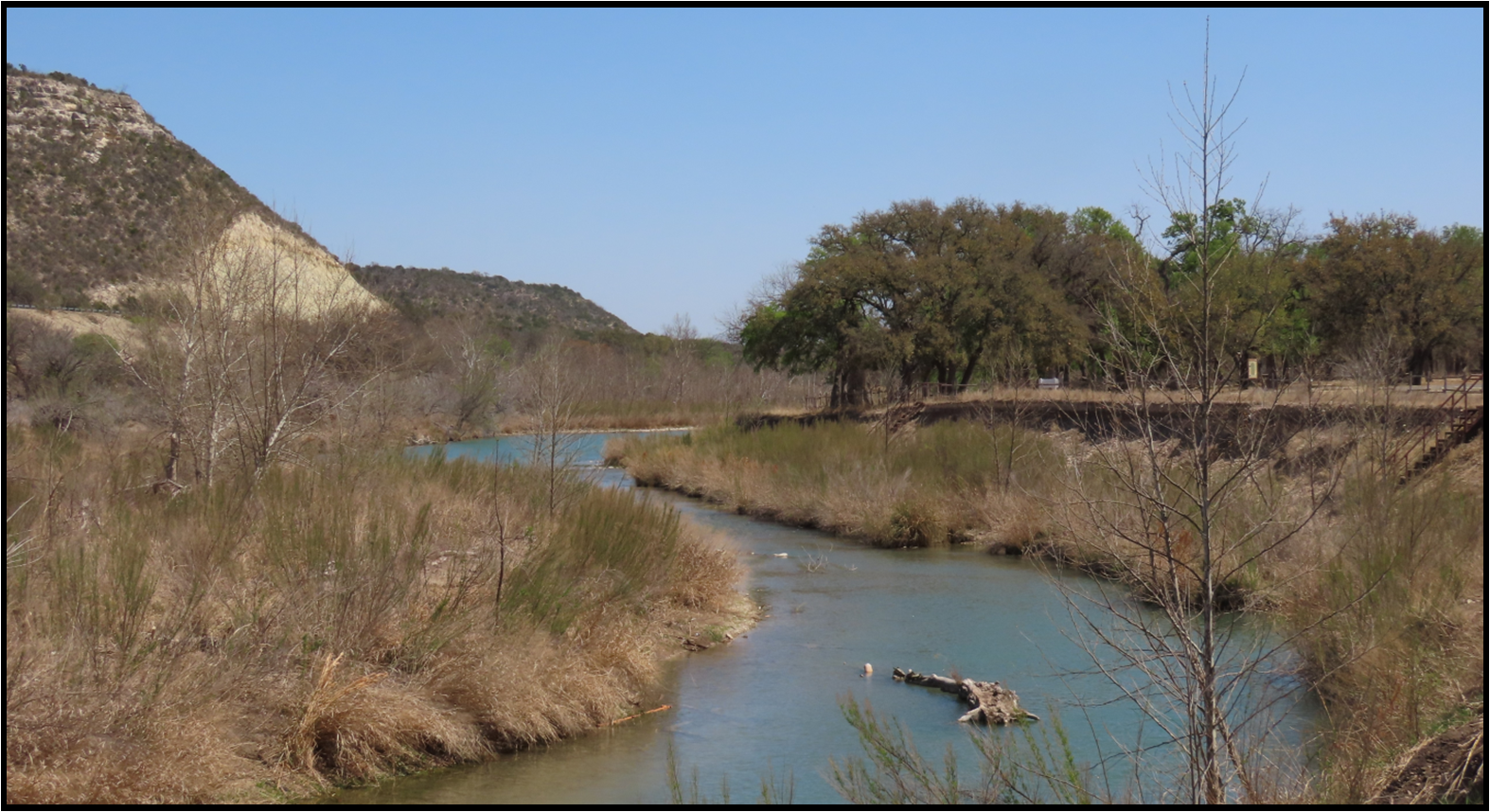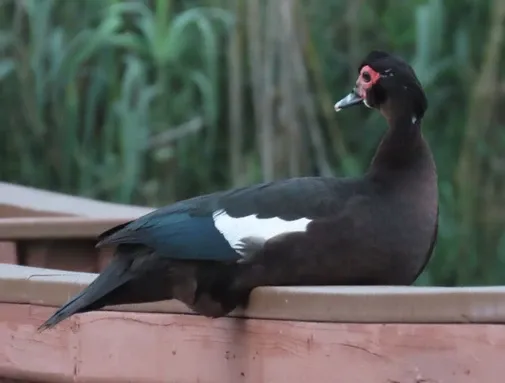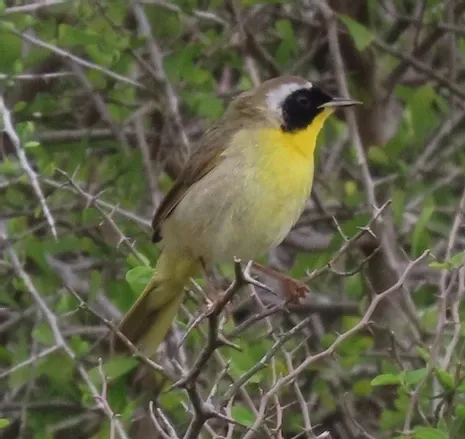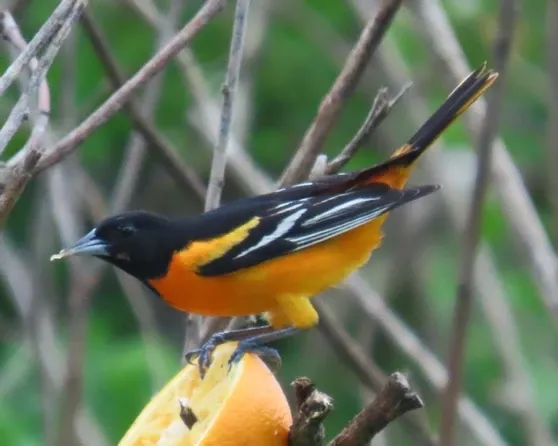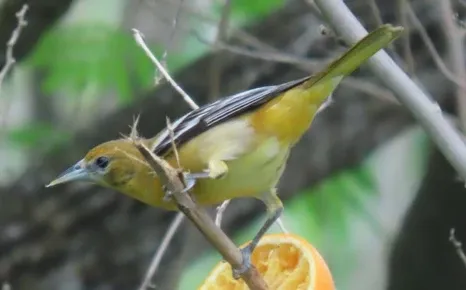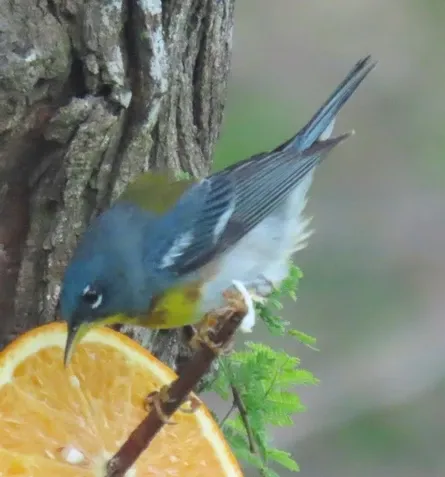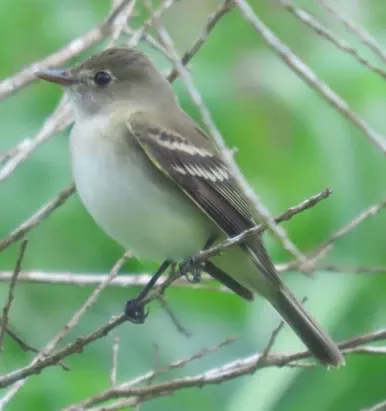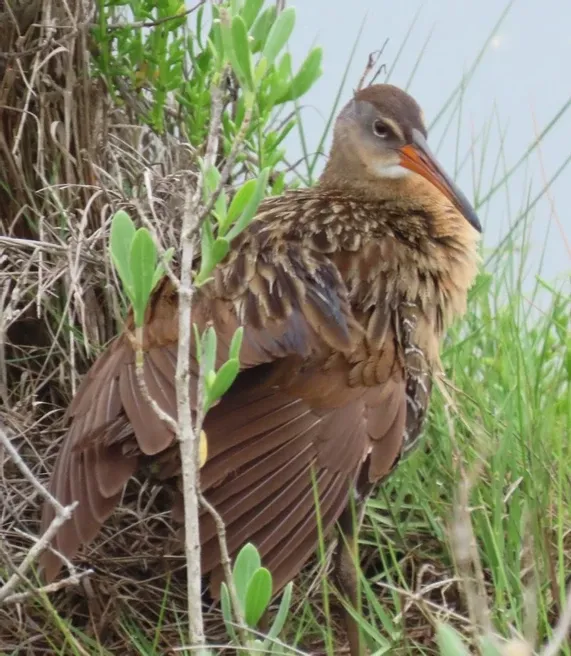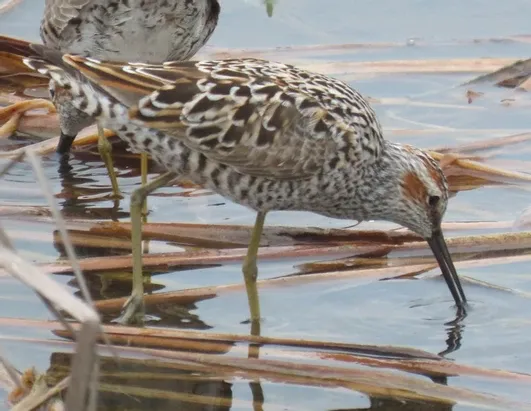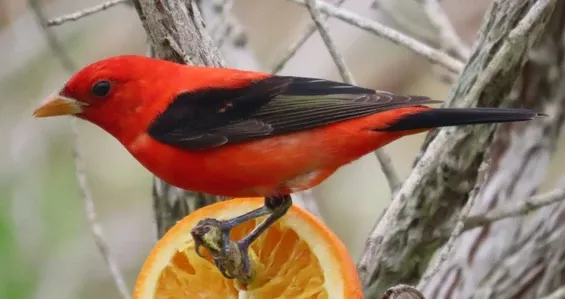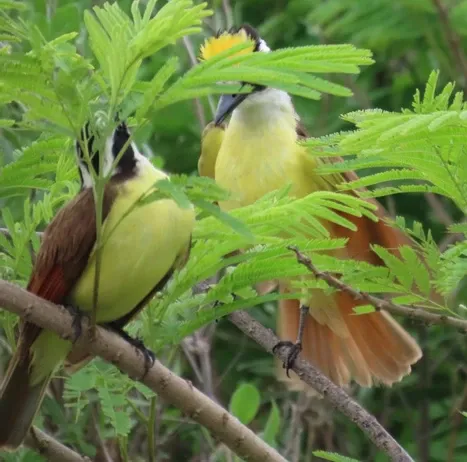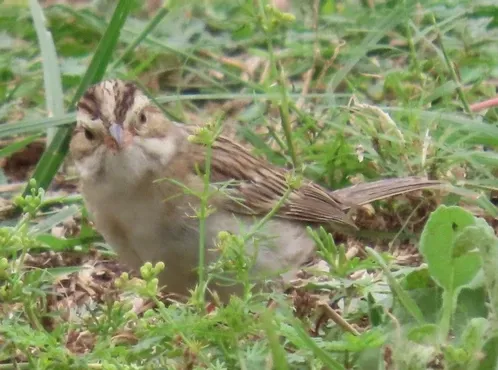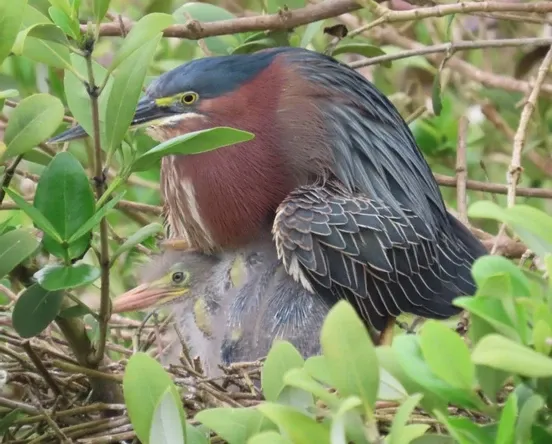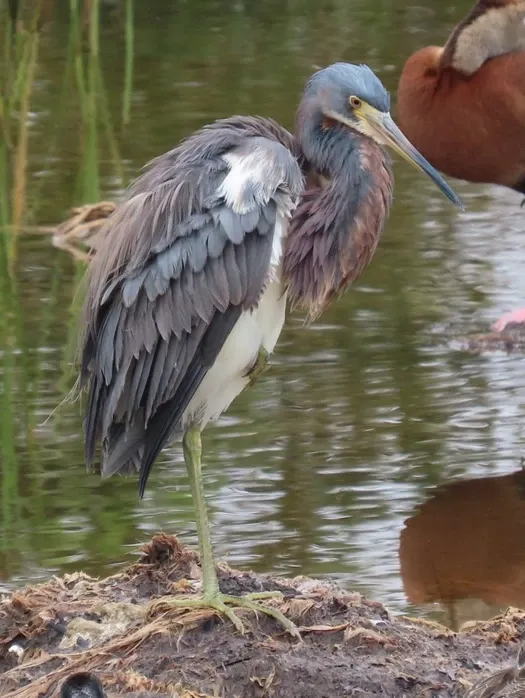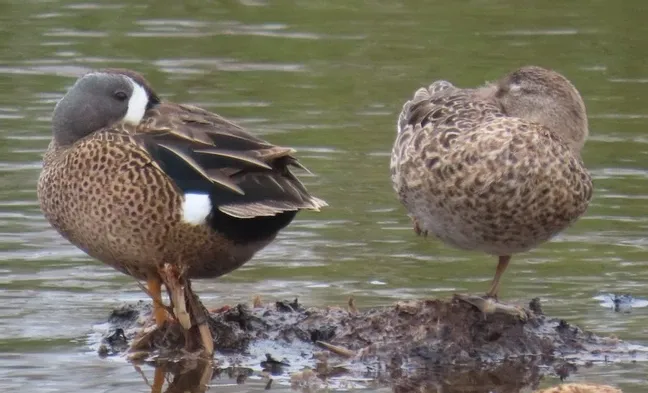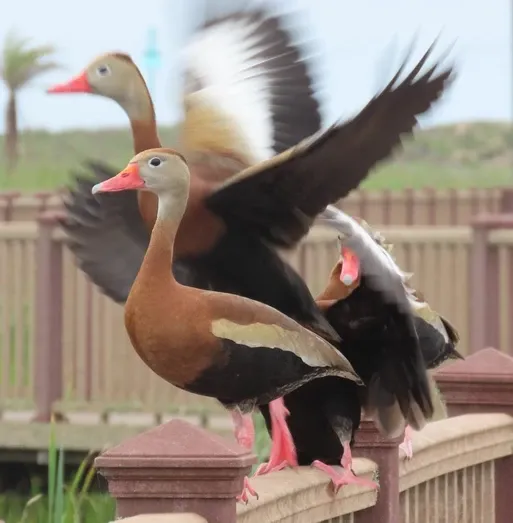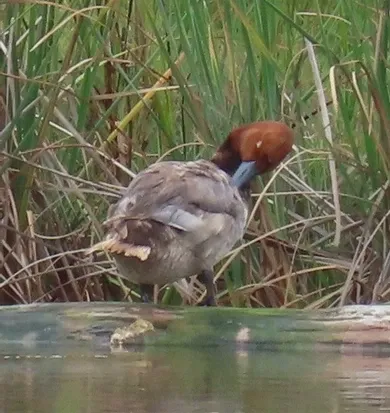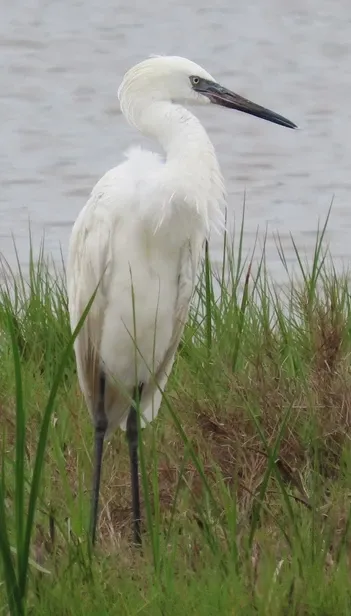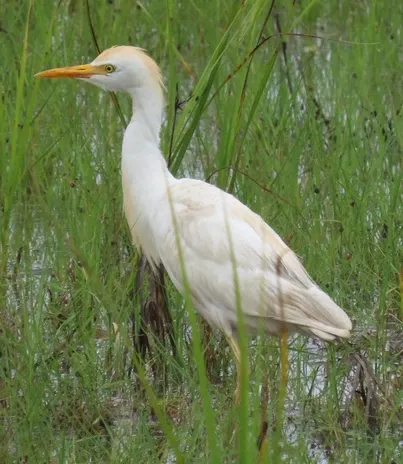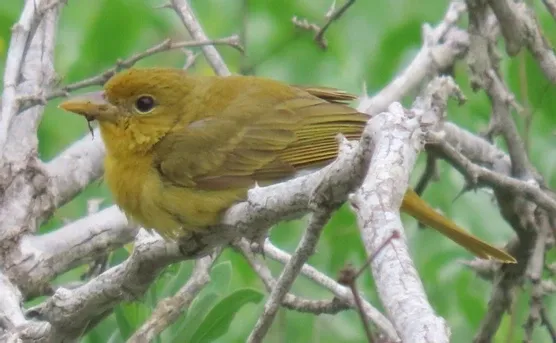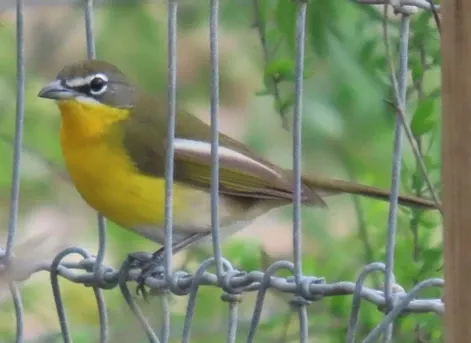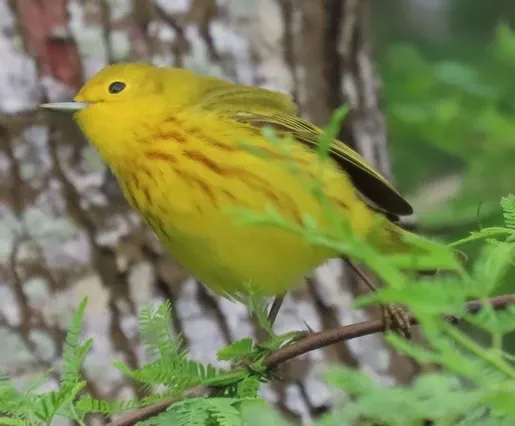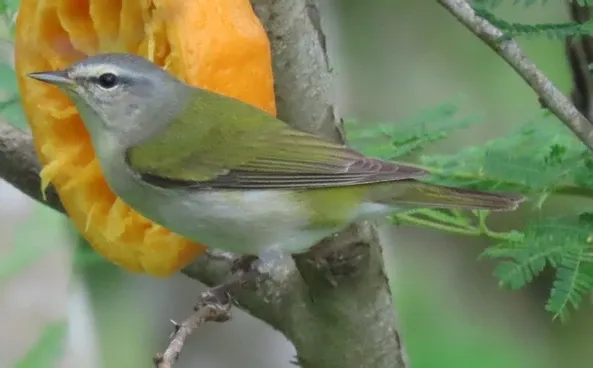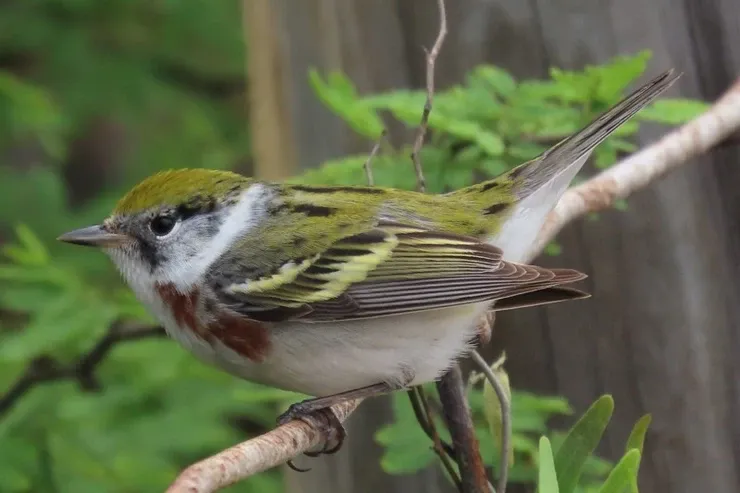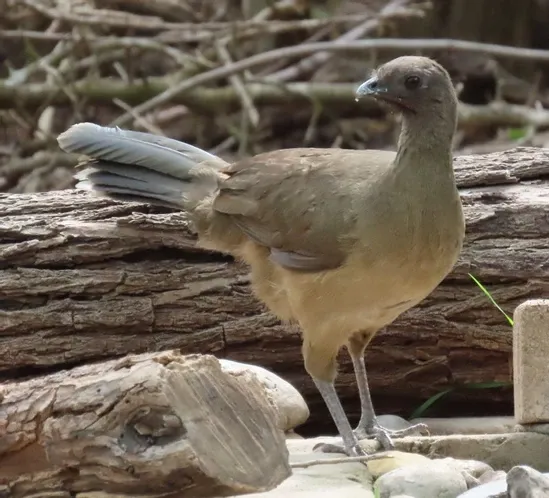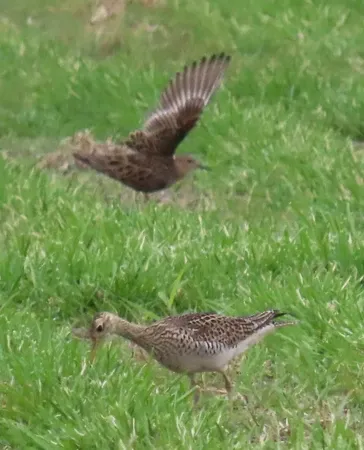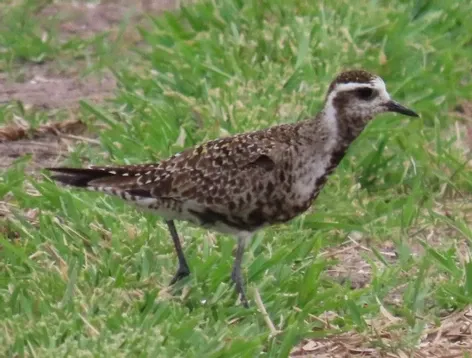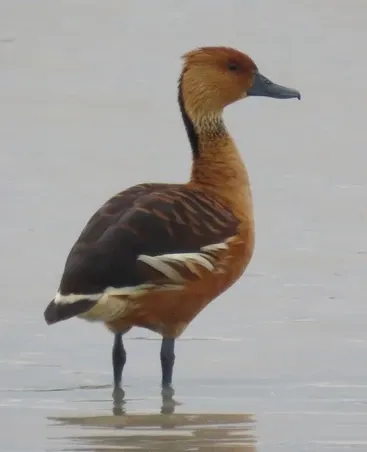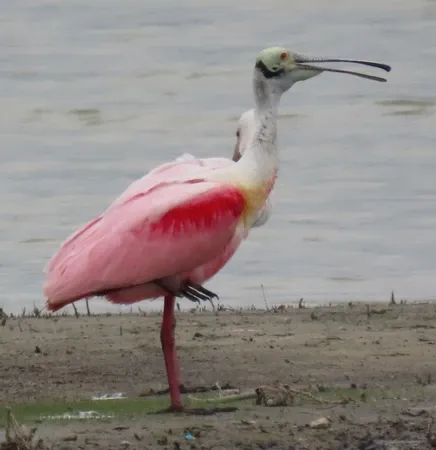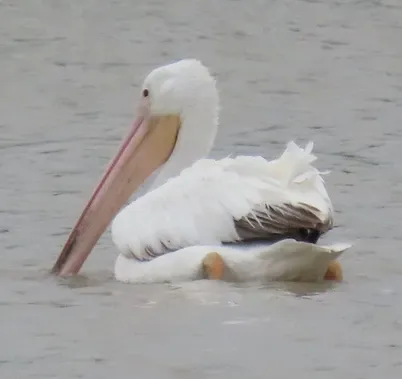Cameron County (Texas) Birdathon
© 2025 Alamo Birding Services LLC
By Mary Beth Stowe
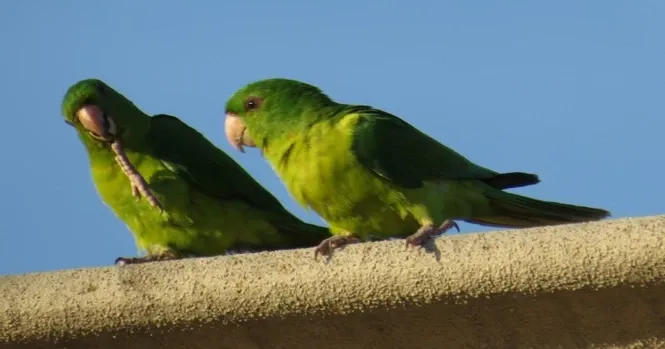
4/30/21
Was a little concerned about getting rained out this day, but thankfully it was dry when I set out (driving in the dark with my eyesight is bad enough, but driving in the dark when it’s raining is terrifying)! As with the Hidalgo County Birdathon, I did things a little differently this time and focused on destinations that were reporting rare (and year) birds, and as it turned out I had to change the “standard” itinerary very little! The first destination is always Resaca de la Palma State Park an hour before dawn for the night birds, and as I turned onto New Carmen Drive logged a Killdeer for the first bird, followed closely by a beenting Common Nighthawk (2). Once parked in my “spot” just outside the main gate, added White-winged Doves (3) tuning up already, and Pauraques (4) in surround-sound! According to the radar, South Padre Island was getting clobbered with a big thunderstorm, and indeed I saw lightning and heard thunder in the distance, but it was nowhere near my location; just close enough to enjoy!
The distinctive brat of a flyover Dickcissel (5) was next, followed by a distant Cardinal (6) and the dawn song of a Brown-crested Flycatcher (7). A Black-bellied Whistling Duck (8) called overhead, and as it started getting lighter several Couch’s Kingbirds (9) joined the dawn chorus, followed by Mourning Dove (10), a singing Clay-colored Thrush (11), a raucous Kiskadee (12), a mellow White-tipped Dove (13), some complaining Green Jays (14), a bouncing-ball Olive Sparrow (15), and a Golden-fronted Woodpecker (16) pretty close to sunrise (not that you could tell; in fact, I got spit on enough to take up the vigil from inside the car)! By sunrise the dripping had let up, so I took a quick walk into the “real” parking area and behind the visitor’s center as an American Robin had been reported (and indeed they had several over the winter), but no sign of that bird, nor of the Turkeys that are often back there, but did add Black-crested Titmouse (17), Mockingbird (18), chuckling Chachalacas (19), and a Long-billed Thrasher (20) to the list. A Great-tailed Grackle (21) flew over just before I left, and on the way to the freeway added a Caracara (22) on a pole, an Eastern Meadowlark (23) and Red-winged Blackbird (24) in the fields along New Carmen, some Barn Swallows (25) swooping across Olmito Road, and a Scissor-tailed Flycatcher (26) on the wire.
The next destination (which was a departure from tradition) was the UTRGV campus in Brownsville, at which a Yellow-rumped Warbler was reported. Truthfully, I didn’t have high hopes of finding that one, either, but now that I had visited the area several times I felt more comfortable going there by myself, and it turned out to be a great substitution (as I had skipped Sabal Palm Sanctuary in favor of it)! A Starling (27) wasn’t all that exciting, but singing Carolina Wrens (28) were, and the place was lousy with feral Muscovies (29) flying all over! A Tropical Kingbird (30) tittered, and the resaca right there at the bookstore had a Green Heron (31), a Spotted Sandpiper (32), and Long-billed Dowitchers (33). Heading over to the “Black Hawk” resaca, a House Finch (34) sang (a good bird to pick up, as they’re rather rare in the Valley), as well as a Common Yellowthroat (35). A Yellow Warbler (36) chirped from one of the riparian trees there, making me wonder if he was a true migrant or one of the several birds that had overwintered there! But one of the most unexpected birds of the day went screeching over low: two Green Parakeets (37)! While looking for what I thought was another warbler that zipped into a tree, my bins landed on a Buff-bellied Hummingbird (38), and on the bridge picked up several Snowy Egrets (39), a couple of Roseate Spoonbills (40), a Little Blue Heron (41), a few Great Egrets (42), and a pair of Blue-winged Teal (43). On the way back a Painted Bunting (44) sang from the vegetation, and a Least Sandpiper (45) fed in the mud below the bridge. Back at the Bookstore Resaca a second look produced Solitary (46) and Stilt Sandpipers (47).
Feral Muscovy Duck; although the domesticated variety comes in many patterns of black and white, this bird retains the plumage found in truly wild birds.
The Brownsville Dump was on the original itinerary, but in light of the rain there was no way I was going in there only to slip and slide up that hill (they may have closed it anyway), so I headed on to Old Port Isabel Road, one of the traditional Birdathon spots which is fully passable only when fully dry, which it obviously wouldn’t be, but the south half is a good caliche road and almost always in good shape. The first bird added to the list right near the new RV park was a Lark Sparrow (48), and with the overcast conditions I could actually see what was in Loma Alta Lake, the most obvious birds being Black-necked Stilts (49). A Blue Grosbeak (50) sang while I perused the lake: lots of Gull-billed Terns (51) were flying and calling, and a falcon-shaped bird got my juices going, but “camera-scoping” proved it to be a Peregrine (52), which isn’t too shabby this late in the season, either! With the bins I was able to pick out Shovelers (53), a prancing Reddish Egret (54), and a couple of Caspian Terns (55), but it took a little extra magnification with the Powershot to pick out Black Skimmer (56), Coots (57), and an American Wigeon pair (58 - I was surprised that one didn’t get flagged)!
Continuing on, the Willets (59) were making a fuss, and just past the canal I heard a peet! that sounded familiar but I couldn’t place; a scanning of the mud close by revealed a Wilson’s Plover (60)! Getting into the mesquite picked up White-eyed Vireo (61) and Bewick’s Wren (62), and three Purple Martins (63) sat on an overhead wire. A Ladder-backed Woodpecker (64) also called from the mesquite, and just past the gun range heard a Cassin’s Sparrow (65) sing in the distance (dipped on Botteri’s, although they’ve been reported). Laughing Gulls (66) called and flew overhead, and nailed down one of the many swallows as a Rough-winged (67). An Altamira Oriole (68) called and sang from somewhere, as did a Brown-headed Cowbird (69). The pond past the chicken coops was productive, adding Mottled Duck (70), a singing Cactus Wren (71), a few Ruddy Ducks (72), and several Wilson’s Phalaropes (73) to the list. The best bird along this route, however, was a presumably returning Ash-throated Flycatcher (74), as I had filmed one in practically the same spot last year! Thankfully he was calling up a storm and allowed for some video for confirmation! An Indigo Bunting (75) gave a brief appearance nearby, and shortly got to the point in the road where I had to turn around. Heading out added a pair of Harris’ Hawks (76) to the list, along with a fleeing Baltimore Oriole (77).
Common Yellowthroat
On to the Island from there, but since I had to take SR 48 to get there, it would have been a crime not to make a brief stop at the famous Boat Ramp to see what could be added. This is traditionally a good place for the oystercatcher, but the tide was so high that there really wasn’t much around: a couple of Brown Pelicans (78) was good for the list, and a Sanderling (79) flew up to the shoreline at my feet! Least Terns (80) were flying around and screeching, while a Bank Swallow (81) gave its rapid-fire call. A Great Blue Heron (82) stood stoically out in the mangroves, while a small group of Avocets (83) way out there was a nice addition.
American Avocets
On to the Island, where a flyover Tricolored Heron (84) got added, along with Rock Pigeons (85) and House Sparrows (86) in town. As mentioned, the tide was so high that I couldn’t drive out onto The Flats if I had wanted to (really didn’t want Heppy’s undercarriage to rust out any more than it already had), but there were only a handful of larids out there, with the only new one being some Royal Terns (87). Swung over to the Convention Centre, where my “favorite” parking spot at the head of the “Circular Area” was already taken (usually that’s the last place available ☺), but miraculously found a spot close to the center itself, which was probably just as well as I had a big bag of oranges to drop off! Collared Doves (88) were the first thing to be added here, but soon after a more appropriate Magnolia Warbler (89) showed himself! Things were definitely slower than everyone expected with the storm that just went through (plus the north wind), and what birds were there you had to work for! Thankfully there were lots of people around to help point out stuff: a Wood Thrush (90) was being sneaky at the water feature, while most of the tourists there were enthralled with the Ruby-throated Hummers (91) coming in to the feeder! A female American Redstart (92) popped in right when Peggy Rudman (the angel in charge of putting out oranges for the birds) walked up to say “hi”, and right after mentioning that a Gray-cheeked Thrush had been hanging around, guess what hopped into the water feature (93)! Poking along the “back yard” someone had found a snoozing nighthawk (the photos were inconclusive as to species), and added Tennessee Warbler (94), Orchard Oriole (95, along with many more Baltimores), Northern Parula (96), and a Black-throated Green Warbler (97). Checking the Back Flats added the Neotropic Cormorant (98) that’s always glued to the pilon out there ☺, and heard a couple of Clapper Rails (99) duetting as I poked back to the southwest corner (where the Cape May’s bottlebrush was). There’s a little opening into the “woods” that often hid skulky things like Kentucky Warbler, but this time it only held a few Bronzed Cowbirds, which got the “honor” of being Bird #100! While enjoying a Black-and-white Warbler (101), a young man (everyone's young to me ☺) who was leading a group at the time called us all back to look at an empid he had found and was calling a Willow; I shot off a bunch of pictures and reviewed them later, and while the all dark bill bothered me, everything else looked good for at least a “Traill’s” type, although it definitely showed an eyering (albeit a weak one), so I later settled on Alder Flycatcher (102). A Catbird (103) popped in during this whole episode, but he was almost ignored!
Male Baltimore Oriole
Female
Northern Parula
An empid that was initially ID'd as a
Willow; I leaned towards
Alder, but yet others believe it's an
Acadian! Gotta love empids...
It was time to check out the boardwalk after that, where I added Common Gallinule (104) and a calling Least Bittern (105) and Sora (106). Five minutes at the Magic Mesquite only added a Wilson’s Warbler (107 – but the only one of the day, so it was worthwhile), and after mulling over whether or not to count the Olive-sided Flycatcher that Peggy called me over to see (as I had only gotten a look at its characteristic shape and not the field marks before it flew off, but everyone else there had seen it well enough to confirm it), I decided to go ahead and add it to the list (108). Although I didn’t add anything new by walking out to the pier, another birder got me on a Clapper Rail out in the open! On the way back I was told that the Purple Gallinule was showing well, so I went over to the other boardwalk, adding a Northern Waterthrush (109) that another gal was pointing out to her friend, and then finally got a butt-view of the Purple Gallinule (110) as it snuck into the reeds! Not new, but some Stilt Sandpipers were showing well close to the boardwalk for photos. I made one last swing around the grounds and added a squeaking Rose-breasted Grosbeak (111), and scouring the cowbird flock finally produced a female Yellow-headed Blackbird (112)! A handful of guys asked for my help in identifying a Lincoln’s Sparrow (113) in the brush, and back at the water feature a Veery (114) made a last minute appearance! On the way back to the car I heard someone say, “Scarlet Tanager,” and there he was on an orange, letting everyone get point-blank views (115)! The “dirty” young White Ibises (116) that had been hanging around for two weeks were still there as well! On the way out a Kiskadee was trying to impress a lady by flaring his crown, but the coveted photo was obscured by leaves!
Sunning Clapper Rail
Stilt Sandpiper
Scarlet Tanager
Displaying
Great Kiskadee (blast that frond!)
Both a Mourning and MacGillivray’s Warbler had been reported at the Birding and Nature Center next door, so the first thing I did after parking was peruse the parking lot area, where a Clay-colored Sparrow (117) was feeding in the grass. I joined the crowd by the leaky faucet as they waited for the Mourning to come back in (which he had about an hour earlier) and added a pretty Nashville Warbler (118) to the list, but not the rarities (someone got onto a Hooded Warbler that I missed). The Cape May had apparently moved on, as the oranges weren’t nearly as active as they had been (still lots of Tennessees, though), so I headed to the Songbird Alley overlook, hearing a Sandwich Tern (119) in the meantime. A 15-minute vigil didn’t produce anything new (not much of anything, really) but after running back out to the car to fetch the charger cord for my phone before it died and then returning, another birder cottoned me onto a Canada Warbler (120) he had seen earlier that had come back!
Clay-colored Sparrow
I was running a little behind schedule by then, so I hoofed it through the boardwalk, pausing to photograph the Green Heron and her babies! As mentioned, with the high tide there weren’t many shorebirds around, and the bay was devoid of water birds (was keeping an eye out for the reported frigatebirds, but nada). A Marsh Wren (121) was singing from the reeds in the fresh-water section, and several already-counted things gave photo ops, such as Blue-winged Teal, Tricolored Heron, and Black-bellied Whistling Ducks. The white morph Reddish Egret showed well, but I was surprised to see the Redhead (122) still hanging around in the “East Pond” (also visible from the Convention Centre)! A bunch of Cattle Egrets (123) were in the grass near the rear end of the boardwalk.
Green Heron and chicks
Tricolored Heron
Blue-winged Teal pair
Black-bellied Whistling Ducks
Surprise Redhead; usually they've cleared out by now!
White morph Reddish Egret; the all-dark bill marks this bird as an immature.
Cattle Egret
I was really hurting for shorebirds, so when I saw some in the little wetlands on the way to Sheepshead I quickly pulled over to assess them: a Lesser Yellowlegs (124) was in one pond with a bunch of stilts, and another little wetland had Ruddy Turnstones (125), Short-billed Dowitchers (126), and a calling Greater Yellowlegs (127). The Sheepshead lots were pretty slow as well, but a 15-minute watch on the “Sunny Side” produced a calling Eastern Wood Pewee (128), a female Summer Tanager (129) loafing on a bare tree branch, and eventually a Yellow-breasted Chat (130) that came in to check things out! A Yellow Warbler was very friendly, and as always the Tennessee Warblers were getting drunk on orange juice ☺! The “Dark Side” didn’t have much activity at all except for a Catbird that came in close, but the real excitement happened just before I left when a very hammy Chestnut-sided Warbler (131) gave everyone there a great show on the fence!
Female Summer Tanager
Yellow-breasted Chat
Yellow Warbler
Tennessee Warbler
Gray Catbird
Female
Chestnut-sided Warbler
Took the toll road back to I-69E, along which added Turkey Vulture (132 – was surprised I hadn’t seen one yet) and White-tailed Hawk (133). Hugh Ramsey Nature Park in Harlingen was the next stop, as a Bell’s Vireo had been reported there, and it also had the potential for a few missed species. Chimney Swifts (134) in the parking lot were a good addition, but as it was getting later in the day the trails were pretty quiet. A thrasher was singing that I suspected was Curve-billed, but since I have trouble telling the two apart by song, I wanted to hear the distinctive call note just to be sure. Down at the arroyo overlook finally hit pay dirt when a Green Kingfisher (135) gave its splat call, and later its more typical “typewriter” ticking! It was really warming up on the way back, so decided to rest at the Hummingbird Trail feeders for five and to see if anything new would come in. Three Chachalacas were working on a suet block when I got there, but just before I left I heard the tell-tale whee-WHEET! of the Curve-billed Thrasher (136), so I could count him with a clear conscience!
Plain Chachalaca
Took the toll road back to I-69E, along which added Turkey Vulture (132 – was surprised I hadn’t seen one yet) and White-tailed Hawk (133). Hugh Ramsey Nature Park in Harlingen was the next stop, as a Bell’s Vireo had been reported there, and it also had the potential for a few missed species. Chimney Swifts (134) in the parking lot were a good addition, but as it was getting later in the day the trails were pretty quiet. A thrasher was singing that I suspected was Curve-billed, but since I have trouble telling the two apart by song, I wanted to hear the distinctive call note just to be sure. Down at the arroyo overlook finally hit pay dirt when a Green Kingfisher (135) gave its splat call, and later its more typical “typewriter” ticking! It was really warming up on the way back, so decided to rest at the Hummingbird Trail feeders for five and to see if anything new would come in. Three Chachalacas were working on a suet block when I got there, but just before I left I heard the tell-tale whee-WHEET! of the Curve-billed Thrasher (136), so I could count him with a clear conscience!
Upland Sandpiper at the bottom, with a displaying Buff-breasted Sandpiper behind him.
American Golden Plover coming into breeding plumage
Took the toll road back to I-69E, along which added Turkey Vulture (132 – was surprised I hadn’t seen one yet) and White-tailed Hawk (133). Hugh Ramsey Nature Park in Harlingen was the next stop, as a Bell’s Vireo had been reported there, and it also had the potential for a few missed species. Chimney Swifts (134) in the parking lot were a good addition, but as it was getting later in the day the trails were pretty quiet. A thrasher was singing that I suspected was Curve-billed, but since I have trouble telling the two apart by song, I wanted to hear the distinctive call note just to be sure. Down at the arroyo overlook finally hit pay dirt when a Green Kingfisher (135) gave its splat call, and later its more typical “typewriter” ticking! It was really warming up on the way back, so decided to rest at the Hummingbird Trail feeders for five and to see if anything new would come in. Three Chachalacas were working on a suet block when I got there, but just before I left I heard the tell-tale whee-WHEET! of the Curve-billed Thrasher (136), so I could count him with a clear conscience!
Fulvous Whistling Duck
Roseate Spoonbills
American White Pelican
